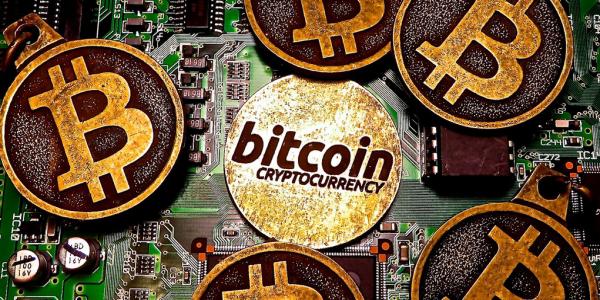Disruptive by Design: Adding Our 2 Cents to the Financial Technology Discussion
Bitcoin developments raise some key questions. Do the United States and other global economic leaders need to overhaul their systems?
In this era of e-commerce, a person can pay for a coffee by simply using a cellphone. Clearly, we have come a long way from trading goats and pelts for goods, but the global method of exchanging currency has advanced little. The world largely relies on the paper money system started by the Chinese Tang Dynasty, despite the enormous expense to maintain physical currency.
Consider the cost to the United States alone. The U.S. Federal Reserve spent $734.5 million in fiscal year 2016 to print 7.6 billion notes at a value of $213 billion. Remarkably, the country also pays a pretty penny to produce coins. Since 2006, it has cost approximately 2 cents to create a penny and 8 cents to create a nickel. In fiscal year 2015, the United States produced $16.2 billion in coins—an increase of 23.9 percent over the previous year. Does anyone else find that ludicrous?
Enter bitcoin, a relatively new virtual currency that is about to turn the world’s economy on its head. Since its debut in 2009, bitcoin’s value has fluctuated, sometimes substantially, often influencing the value of traditional currencies. An uptick in its value this fall, for example, sent investors scurrying from the weakening Chinese yuan and Venezuelan bolivar, which affected trade and markets. Over the past eight years, bitcoin’s value has oscillated from a low of $1 per coin in 2011 to a high of nearly $1,217 per coin in 2013. In January, one bitcoin was valued at approximately $904.
Now, nations such as Canada, China, the Netherlands and the United Kingdom, to name a few, might incorporate the bitcoin and similar systems into their mainstream currency networks, along with blockchain technology for secure transactions. South Korea leads an aggressive charge to tap the emerging financial technology, or fintech, sector. This fall, the government unveiled a road map that includes spending $2.65 billion over the next three years to support testing and development with companies that use bitcoins. In addition, Russia aims to launch its own “cryptocurrency” sometime this year. Cryptocurrency is the electronic, decentralized, peer-to-peer cash exchange system that uses encryption to validate, secure and send transactions.
These developments raise some key questions. Do the United States and other global economic leaders need to overhaul their systems? If they do not, do they risk falling dramatically behind in the technological revolution? And will the lag lead to devastating consequences?
This issue has registered as barely a blip on the radar. Shortly after South Korea announced its fintech plans, the U.S. Justice Department announced on USAJobs.gov two new positions for legal digital currency experts: one needed in policies and regulations governing virtual currency and one in the development of legislative initiatives and strategies. And the Federal Reserve in December released a research paper on blockchain technology that addresses the challenges and opportunities for possible fintech integration. The overall research goal was to “examine how this technology might be used in the area of payments, clearing and settlement and to identify both the opportunities and challenges facing its practical implementation and possible long-term adoption.”
Bitcoin’s blockchain technology facilitates cryptocurrency exchange, protecting user information and verifying transaction information. The technology eliminates the need for a central authority. Instead of banks, software companies such as BTCChina, Coinbase and BitPay provide tools to safeguard storage of sensitive information and allow companies to use bitcoins globally through various secure protocols.
Obviously, migration toward cryptocurrency exchanges will radically alter the entire financial infrastructure. And for good reason. We will always buy and sell using some form of currency. Why not use the most secure option available? Show me the digital money!
Senior Airman Ryan René Rosado, USAF, is a target analyst reporter for the U.S. Air Force’s 800 Combat Mission Team/Combat Support Team. She received the Distinguished Young AFCEAN Award for 2015 and is a member of AFCEA’s Alamo Chapter. The views expressed here are hers alone.





Comments